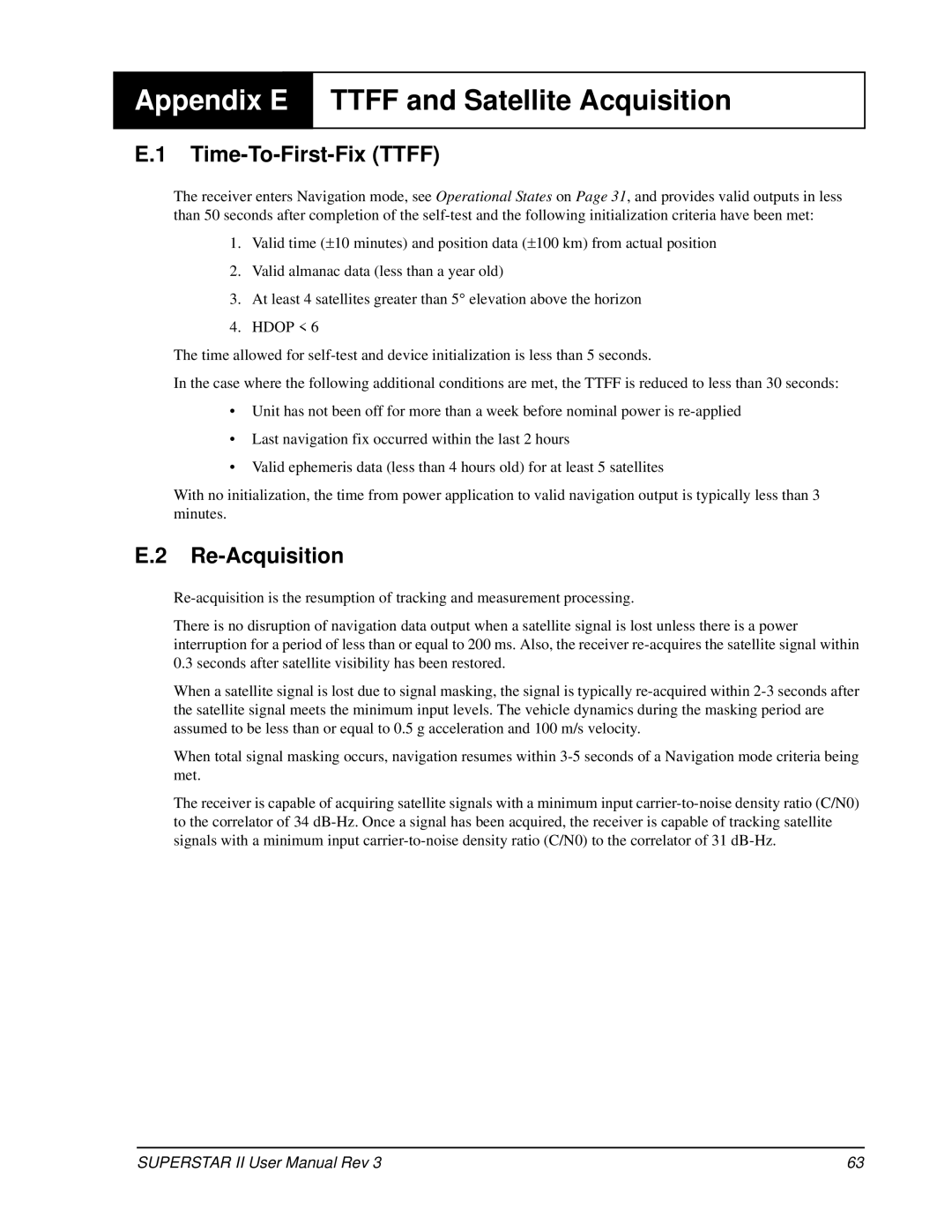
Appendix E
TTFF and Satellite Acquisition
E.1 Time-To-First-Fix (TTFF)
The receiver enters Navigation mode, see Operational States on Page 31, and provides valid outputs in less than 50 seconds after completion of the
1.Valid time (±10 minutes) and position data (±100 km) from actual position
2.Valid almanac data (less than a year old)
3.At least 4 satellites greater than 5° elevation above the horizon
4.HDOP < 6
The time allowed for
In the case where the following additional conditions are met, the TTFF is reduced to less than 30 seconds:
•Unit has not been off for more than a week before nominal power is
•Last navigation fix occurred within the last 2 hours
•Valid ephemeris data (less than 4 hours old) for at least 5 satellites
With no initialization, the time from power application to valid navigation output is typically less than 3 minutes.
E.2 Re-Acquisition
There is no disruption of navigation data output when a satellite signal is lost unless there is a power interruption for a period of less than or equal to 200 ms. Also, the receiver
When a satellite signal is lost due to signal masking, the signal is typically
When total signal masking occurs, navigation resumes within
The receiver is capable of acquiring satellite signals with a minimum input
SUPERSTAR II User Manual Rev 3 | 63 |
